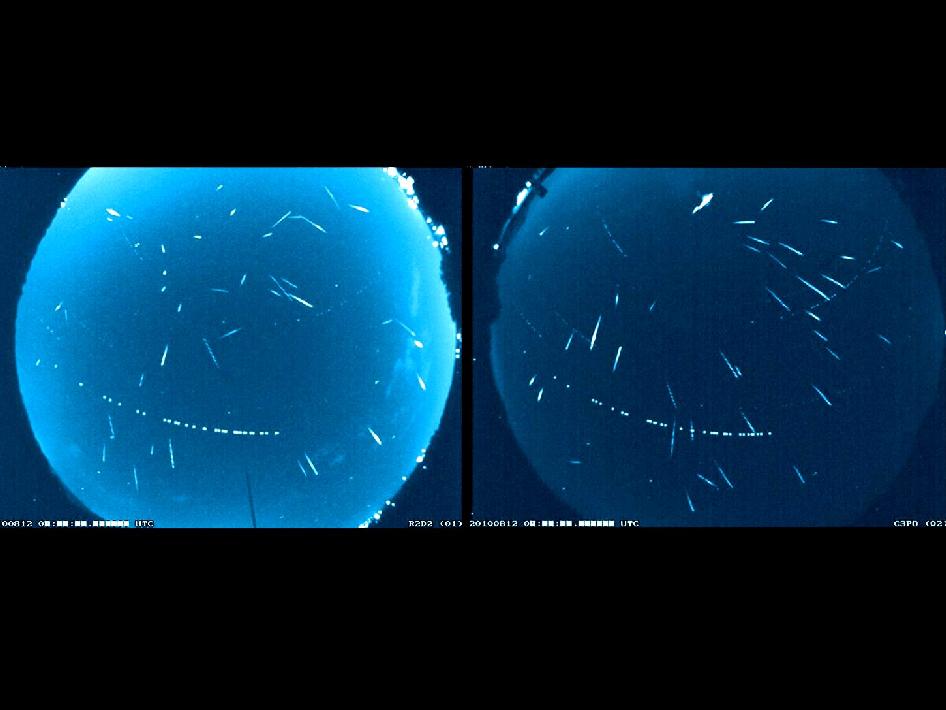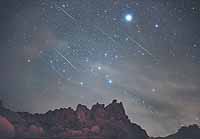Meteoroids are small pieces of rock that come from the debris of comet tails or when two asteroids collide and release debris.
Once they enter the Earth's atmosphere they are called meteors. These are streaks that we see in the sky, also known as 'shooting stars'. The friction caused between the air molecules and the meteor cause it to heat up and burn. This is what causes it to glow. Many break up at this stage and disappear.
Some survive the fall and land on the Earth's surface. Meteors that make it to the surface are called meteorites.
If a meteor is brighter than any planet (in the night sky), then it is classified as a fireball. Especially bright ones are known as bolides.
When a meteor enters the atmosphere, an ionisation trail is formed. This is when molecules in the atmosphere become ionised temporarily. During meteor showers, an entire area of the sky is continuously ionised. This can effect radio signals trying to escape.
Meteor showers occur several times in a year. It is caused when a comet releases debris in the path of Earth's orbit. Then, as Earth passed through this debris, a spectacular meteor shower is seen, sometimes lasting a couple of nights.



